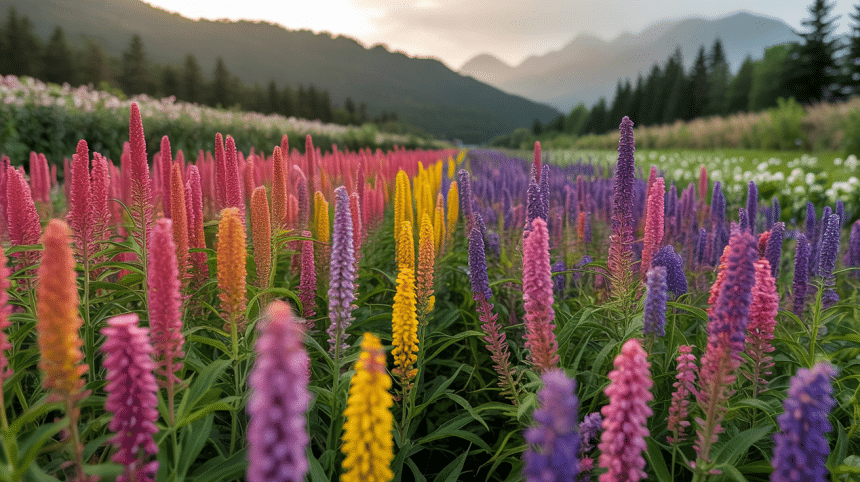Did you know that pollen comes in more than just yellow? From pure white to deep purple, pollen displays a wide range of colors that few people notice in their daily lives.
These tiny grains play a key role in plant reproduction, yet their varied hues remain largely unknown to most folks. Each color tells a different story about the plant it comes from – some indicate the plant family while others hint at the nutrients inside.
When you look at pollen up close, you’ll find that this small but mighty substance offers clues about plant health, species identification, and even environmental changes.
Ready to learn more about the colorful world of pollen and what these tiny specks can teach us? Let’s start with the basics.
What is Pollen?
Pollen consists of tiny grains made by flowers. These small particles carry male genetic material needed for plant reproduction.
Plants make pollen in their anthers, which sit at the top of stamens inside flowers. When pollen moves from one flower to another, it allows plants to form seeds and fruits.
This transfer happens through wind, water, insects, birds, and other animals. Pollen feeds many creatures like bees and butterflies, making it a vital food source in nature. Without pollen, most plants could not reproduce, and our world would have fewer fruits, vegetables, and flowers.
This makes pollen key to keeping plant variety and healthy ecosystems across the globe.
The Science of Pollen Color
Pollen gets its color from specific compounds in its walls. Yellow pollens often contain carotenoids, while reddish ones have anthocyanins. White pollen simply lacks strong pigments.
Several factors affect pollen color:
- Plant genetics
- Soil minerals
- Growing location
- Weather conditions
- Plant age
These colors serve important purposes. Bright pollen helps attract certain pollinators like bees, who see colors differently than humans. Darker pigments protect the genetic material from sun damage, much like natural sunscreen.
Scientists use pollen color to monitor plant health. Changes in normal color patterns can signal stress from pollution or climate changes, making pollen a useful tool for environmental study.
Common Pollen Colors and Their Sources
Pollen comes in many colors, each linked to different plant types. The color often hints at the plant family and helps scientists identify pollen sources without seeing the whole plant.
1. Yellow Pollen
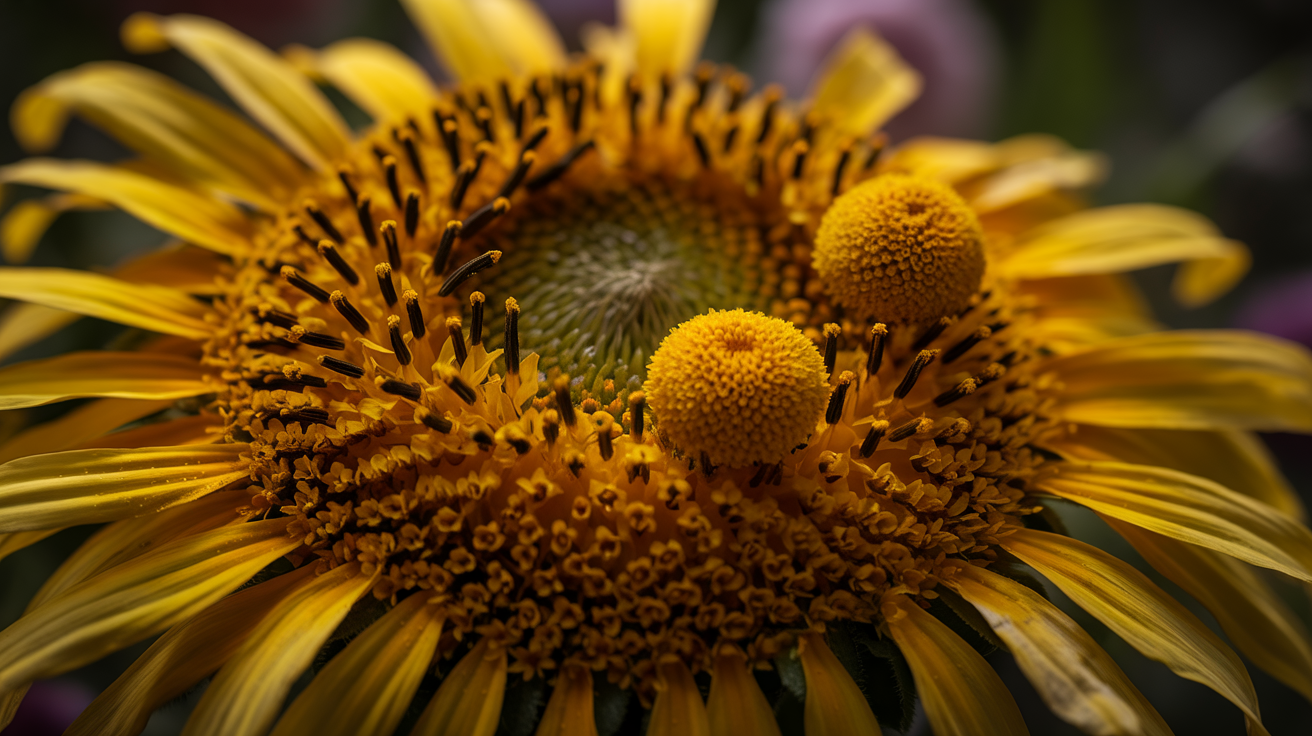
- Found in most common garden plants like sunflowers, daisies, and dandelions
- Often contains high levels of protein and fat that bees collect for food
- Usually produced in large amounts by wind-pollinated plants
Fun fact: Yellow pollen stains are so tough to remove from clothing because the outer shell contains oils that bond tightly with fabric fibers.
2. Orange Pollen
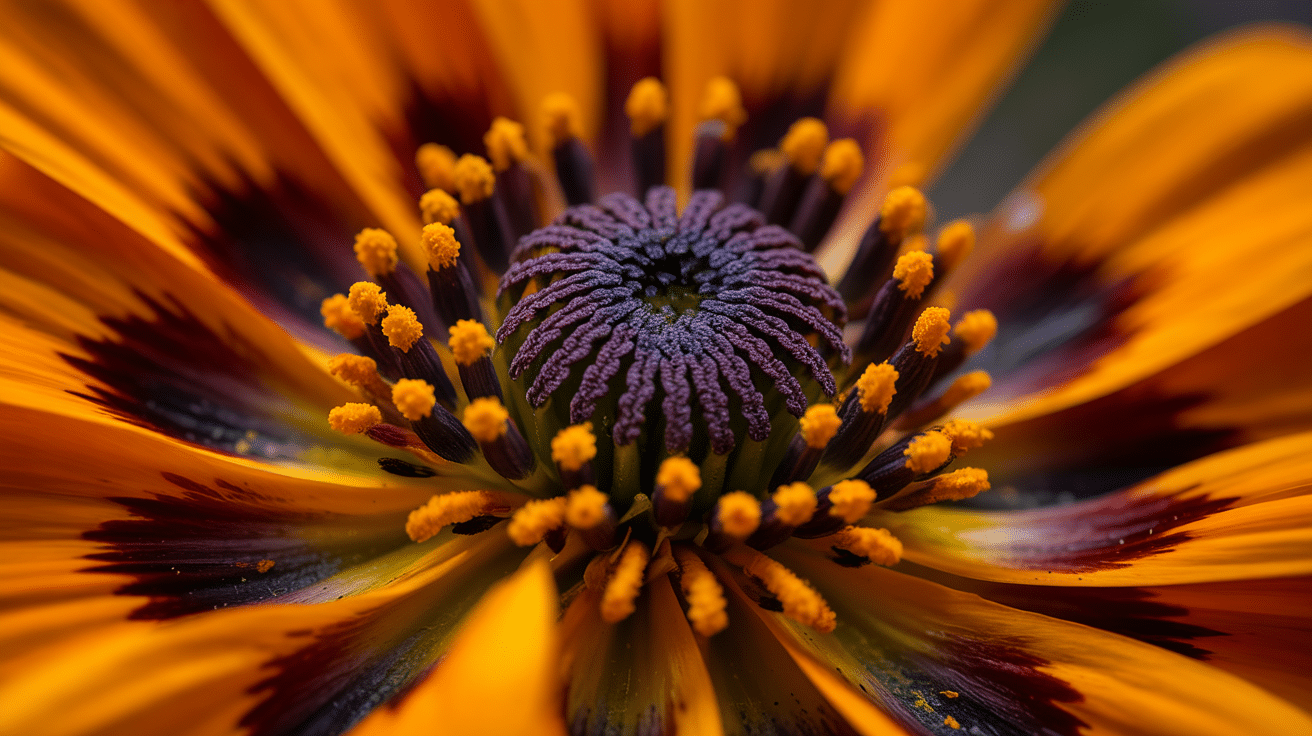
- Common in marigolds, poppies, and many citrus tree blossoms
- Often has a higher sugar content than other pollen colors
- Typically larger in size than yellow pollen grains
Fun fact: Orange pollen can sometimes change color when exposed to air, shifting toward brown or reddish tones.
3. White Pollen
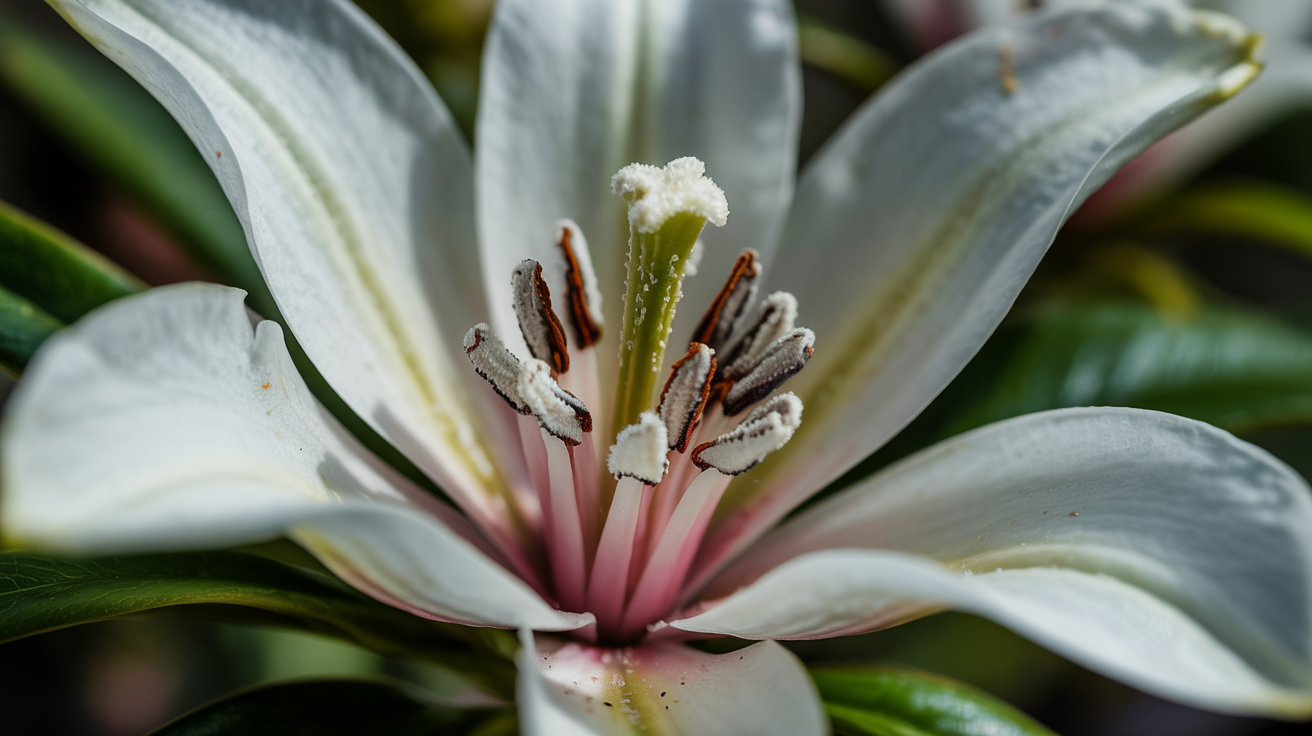
- Produced by lilies, magnolias, and many night-blooming flowers
- Often has a mild scent that helps night pollinators find flowers
- Usually appears more powdery and light than colored pollens
Fun fact: White pollen is easier for humans to see under UV light, where it often glows!
4. Purple and Blue Pollen
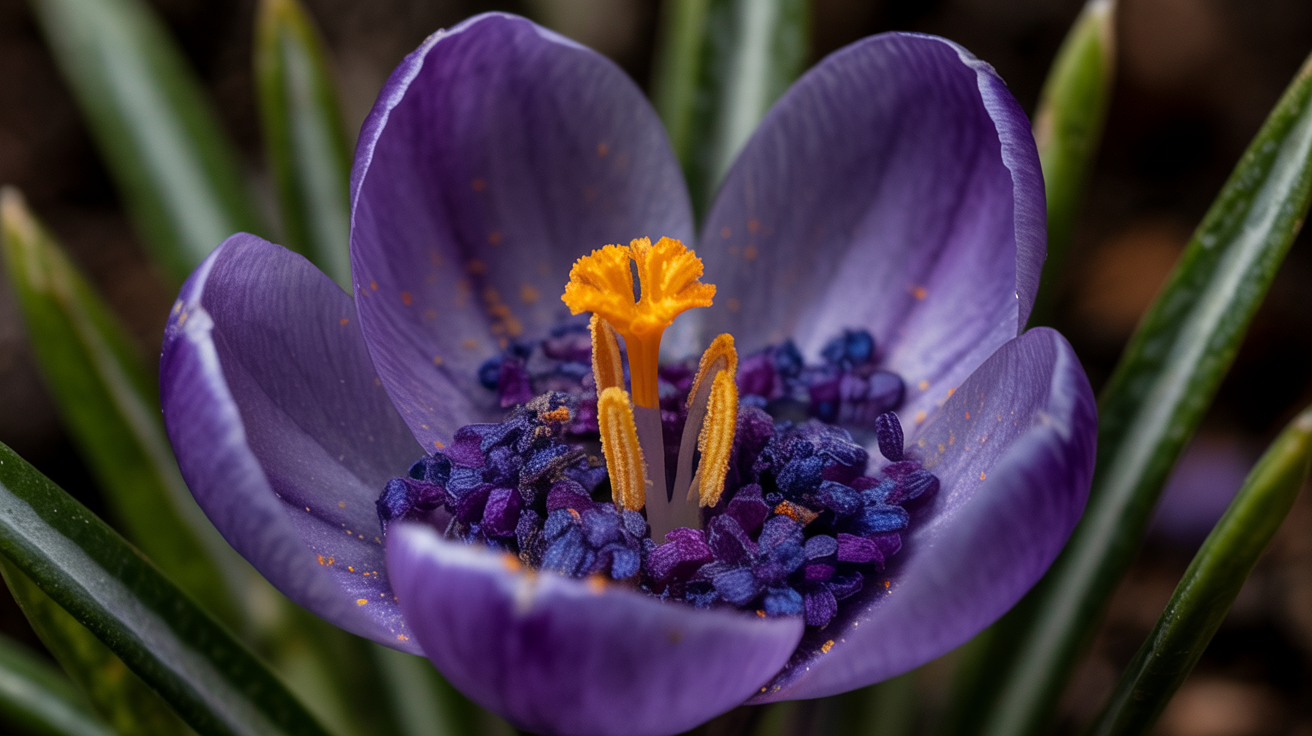
- Found in lavender, some crocuses, and certain wildflowers
- Contains unique pigments that may help protect against UV damage
- Often sticky with a stronger scent than lighter-colored pollens
Fun fact: Blue pollen is so rare that when scientists find it, they often study it for possible medicinal compounds.
5. Red and Green Pollen
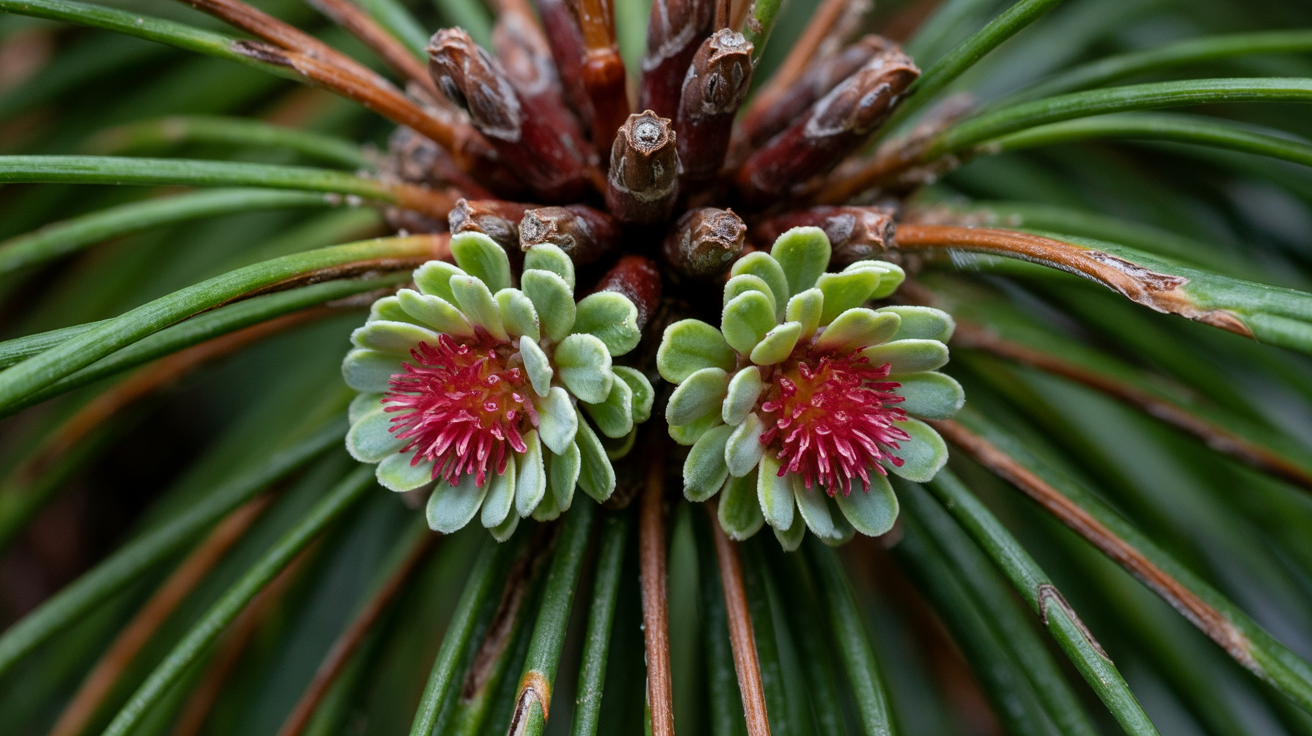
- Red appears in some pine species and tropical plants
- Green pollen comes from certain grasses and some maple trees
- Both colors help camouflage pollen from pollen-eating insects
Fun fact: Green pollen is much more common than people think—it’s just hard to spot against green plant backgrounds.
Why Do Pollens Have Different Colors?
- Pollinator attraction – Bees easily spot yellow pollen while night pollinators find white pollen more visible in darkness, ensuring the right helpers visit.
- Recognition systems – Pollinators learn to associate specific pollen colors with food rewards, encouraging return visits to the same plant species.
- UV protection – Darker pollen pigments shield the genetic material inside from harmful sun rays, especially important for plants in exposed locations.
- Species identification – Each plant family typically produces pollen in characteristic colors, helping both pollinators and scientists identify plant types.
- Environmental indicators – Pollen color can change based on soil composition or weather conditions, providing information about a plant’s growing environment.
Pollen Color and Allergies
Pollen causes sneezing and watery eyes for many people, but the color itself doesn’t directly cause allergies. The real culprits are proteins inside the pollen grain.
Pollen color doesn’t determine how strongly you might react to it. Your body responds to the protein structures, not the pigments that give pollen its color. However, certain colors often match up with the worst offenders:
- Yellow pine pollen covers cars and patios but causes fewer allergic reactions than expected
- Light-colored grass pollen triggers many spring and summer allergies despite being nearly invisible
- Pale ragweed pollen creates severe fall allergies for millions of people
- Colorless tree pollens like birch, oak, and maple lead to widespread spring suffering
Plants that make lots of lightweight pollen for wind travel tend to cause more allergy problems. These often produce less showy pollen since they don’t need to attract insects.
Scientists study pollen under microscopes to track allergy patterns. Each type has a unique shape and wall pattern that helps identify it, more important for allergy research than the color you see.
People with pollen allergies should know that the most visible pollens (like the yellow dust on your car) aren’t always the ones making you sneeze. The tiny, less visible grains often cause more issues.
The Role of Pollen Color in Pollination
Pollen color serves as a visual signal between plants and their pollinators. Bees show strong preference for yellow and orange pollen, which their eyes detect easily from far distances.
Moths and night pollinators spot white pollen more easily in dim light. Most insects see colors differently than humans – many can detect UV patterns invisible to us that create “landing strips” guiding them to flower centers.
Bright, vivid pollen colors typically indicate fresh, nutrient-rich grains with high protein content, while faded shades may warn pollinators of old or low-quality pollen.
Plants have evolved specific pollen colors over time to match the visual systems of their most effective pollinators.
This color diversity helps plants stand out in crowded fields, improving their chances of successful pollination when many species bloom simultaneously.
Pollen Color in Art and Culture
Cultural Significance: Pollen colors hold meaning in many societies worldwide. Yellow pollen often links to sunshine and wealth in Asian art. Native American tribes use colored pollens in sand paintings for healing rituals. Hindu ceremonies include yellow turmeric, which resembles pollen, as a symbol of purity and good fortune.
Historical Art: Ancient Egyptian tomb paintings show beekeepers with yellow dots representing pollen. Medieval manuscripts feature gold leaf that mimics pollen’s shimmer. Renaissance flower paintings carefully captured the exact shade of pollen on stamens as a sign of artistic skill.
Modern Uses: Today’s artists create pollen prints by pressing flowers onto paper. Photographers capture pollen under microscopes to show its hidden beauty. Fashion designers draw color inspiration from pollen hues for spring collections. Cosmetic companies name makeup shades after pollen colors from popular flowers.
Symbolism: Yellow pollen typically represents life and birth in art. White pollen often stands for purity or spiritual growth. Red or orange pollen connects to passion and vitality in many cultural works. The fleeting nature of pollen makes it a symbol of time’s passage in poetry and literature.
Conclusion
Pollen colors tell us much about the world of plants. From bright yellows to gentle whites, these tiny grains play a big part in plant life and our own.
They help us spot which plants make them, show us how plants talk to their pollinators, and even give us clues about our changing world.
Next time you see a dusting of colored powder on a flower or leaf, take a moment to notice its shade. That small speck connects to a much bigger story of plant survival, insect partnerships, and natural balance.
What pollen colors have you spotted in your garden or local park? Look closely at the next bloom you pass – you might be surprised by the colorful world hiding in plain sight.

